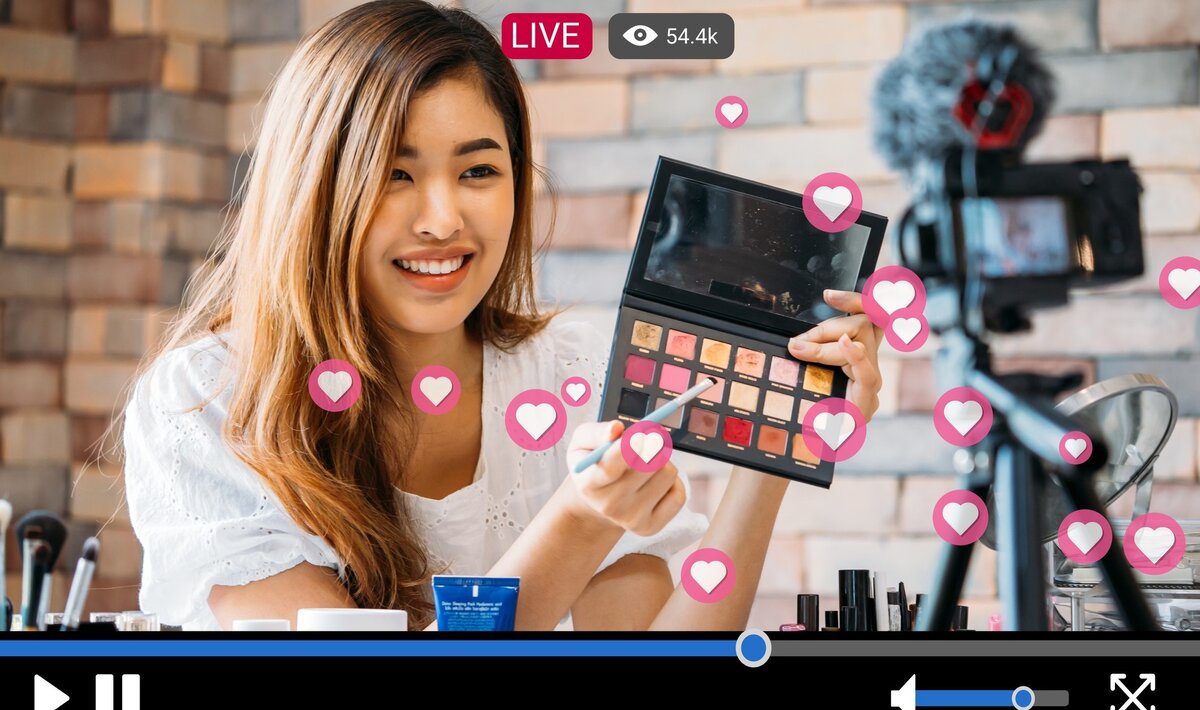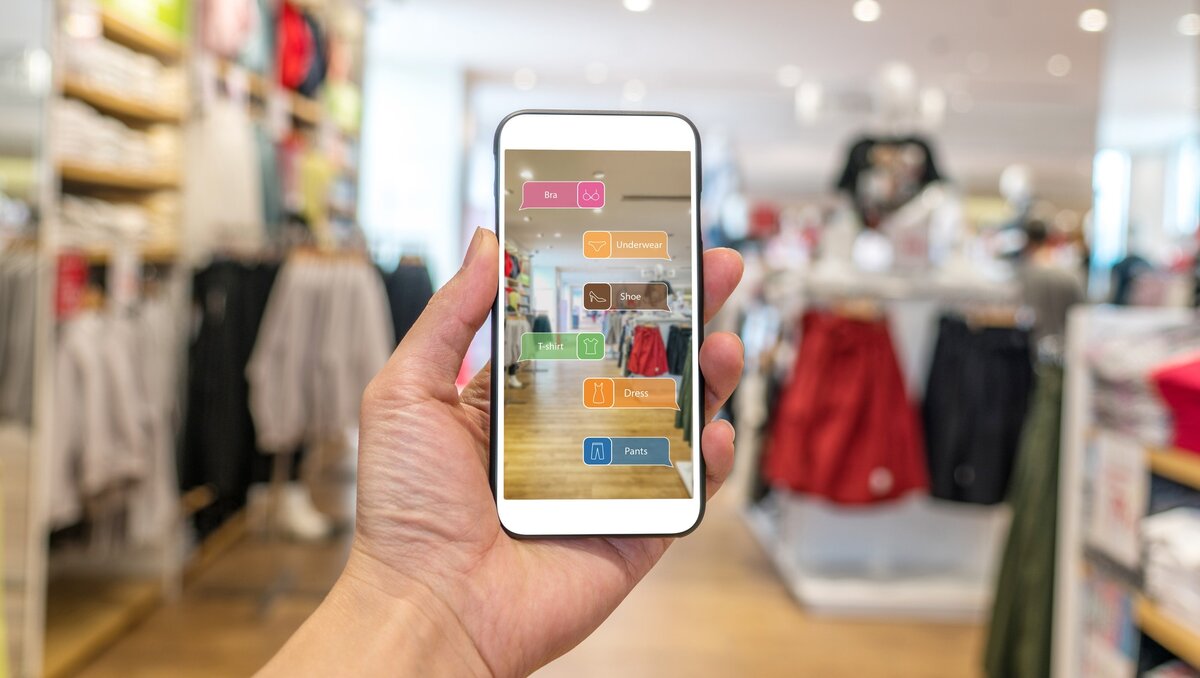Over the past several years, the landscape of digital marketing has continued to morph and grow. It’s been developing since the dawn of the internet, changing to better suit trends of the time. Advertising doesn’t come with a strict doctrine, and digital marketing is certainly no exception. Rather, methods of marketing must evolve to suit the culture being advertised to.
As social media continues to evolve, and as our use of these platforms’ changes, so must the strategies businesses use to market to audiences.
Also, as a result of social media picking up steam over the past decade, companies have gained an increasingly quick means of receiving feedback from audiences. If a product or a campaign launch has a lackluster reception or even a disastrous response, companies are going to know instantly. This was certainly not always the case for advertising. Take Kendall Jenner’s 2017 Pepsi ad, which led to an instantaneous, large-scale PR nightmare for the company. This speed and level of response wouldn’t have been possible, decades earlier.
SEO has also come a long way, over the past ten or so years. Marketers were caught in a race to change alongside Google’s frequent updates, new product features, and new or developing algorithms. Search engines are only getting smarter, and brands have had to stay in touch with that fact. A lot has changed in the world of digital marketing, and a lot will continue to change, in the years to come.
A Timeline of Digital Marketing Over the Last Decade: Influencer Marketing, Social Media Marketing, and Beyond
2011: The Internet Overtakes Television
While 2011 wasn’t a revolutionary year for digital marketing, it was a year when several small (but important) steps were made.
Probably the biggest development in social media marketing of the year was the launch of Google+. Although the site didn’t allow marketers to create brand pages until October (several months after the platform’s launch), the platform showed immediate promise. Google+ gave marketers a unique level of personalization, making it easier for brands to target people based on their interests. This was definitely an improvement over Facebook-based advertising at the time.
Speaking of Facebook: In 2011, the popular social media platform overhauled much of its approach to marketing on the site. Toward the end of the year, it became clear that “likes” were losing meaning to advertisers. This was thanks to the introduction of Facebook Gestures, which allowed marketers to transform any verb into a link. The switch over to the Timeline style of profile also allowed brands to create pages for themselves, for the very first time.
Google Panda was also launched this year. This was a major algorithm update for the search engine, which heavily prioritized the quality of a site’s content as a part of SEO. For example, sites with duplicate content, a high ad-to-content ratio, or a lack of trustworthiness were seen as unfavorable. To rank well with Google, sites had to begin putting even more effort into creating the highest quality content they could manage. If anything, Google Panda foretold the future of SEO.
It was also in the year 2011 that, for the very first time, web use by young people overtook their level of TV viewership. This was an incredibly important figure for marketers and brands to take note of since it was a pretty clear indication of where audiences were moving. A concerted transition over to digital marketing was more important than ever, especially for marketers targeting a younger audience.
2012 – 2013: The Digital Landscape Is Shifting
In the world of digital marketing, 2012 was an eventful year. It was a year when the shifting digital landscape was only becoming more obvious, to marketers.
For one, 2012 brought search engine result pages that, finally, began to truly incorporate social content. In addition, several IPOs were launched within the sphere of digital marketing. The year also saw a notable increase in Google’s search dominance, as well as a heavier-than-ever reliance on digital marketing agencies and tools, as a means to support the marketing efforts of many companies.
In 2012, there was also an increasing use of marketing automation. More than in the past, digital marketers were using triggered emails, which included “welcome” campaigns sent to potential customers. This particular shift can be attributed to the accessibility of low-cost email systems — including MailChimp and Aweber. Previously, these kinds of automated communications were only available to businesses through (much pricier) Enterprise systems.
Google Ads (then known as “AdWords”) remarketing gained considerable popularity in 2012 too. In April 2012, Google also released Penguin, another major revamping to their search engine algorithm. This time, the company was aiming to address back-linking strategies — so, this algorithm update had a noticeable effect on how Google evaluated links during the ranking process. Updates such as this encouraged the adoption of white-hat SEO strategies, rather than black-hat strategies.
Important to digital marketing in 2013 was the purchase of Tumblr by Yahoo. At the time, Tumblr was one of the most highly trafficked social sites, despite a lack of focus on advertising. After being purchased by Yahoo, Tumblr made a big move toward monetization, which hadn’t previously been a feature of the website. This was also the year that Instagram Ads was launched.
Growth hacking, as an approach to digital marketing, picked up significant steam in 2013. This strategy is based largely around conversion rate optimization (CRO), although it’s actually quite a bit broader than that. Rather, growth hacking involves testing various business models, refining product offerings, and refining pricing models.
2014 – 2015: Targeting Audiences and Refining Search Engine Optimization
The year 2014 saw several major events in the realm of digital marketing.
This included:
- Mobile device usage surpassed desktop internet usage. Clearly, audiences were spending more time on their phones than on their computers. This is a trend that had been building for several years prior to 2014, although this is when it crossed a key threshold.
- Tailored advertisements were introduced to LinkedIn.
- The Facebook Messenger app was launched.
- Also, this year Facebook acquired WhatsApp.
All of these events had an impact on methods of digital marketing at the time.
Furthermore, 2014 brought about Google’s Pigeon update — yet another major revamping of their search algorithm, attempting to continue filtering out black-hat SEO users. With Pigeon, local search was even further reshaped. Well-optimized sites became even more heavily rewarded, gaining an advantage over their competitors in local search engine results. Location-specific search was also improved upon, as well as location-based browsing on mobile devices. This had a significant impact on local advertisers, especially.
It was that same year that Google algorithms began prioritizing HTTPS websites over their unencrypted counterparts. This is, in part, because encryption promises data integrity, protecting confidential user information. So, a safer website meant better SEO and ranking for websites, beginning in 2014.
In 2015, Snapchat first launched its “Discover” feature. Before the release of Discover, Snapchat was really only known as a photo messaging app — not exactly an advertising hub. At its release, the goal of the Discover page was to provide audiences with a stream of content, all supplied by major media corporations. Snapchat Discover introduced a brand-new method for digital marketers to generate revenue.
Other significant digital marketing happenings in 2015 included:
- Predictive analytics began to pick up some traction, gaining new popularity. This is a form of data analysis that, years later, would become integral to the digital advertising landscape. After collecting and analyzing user data, predictive analytics can be used to better understand the wants and needs of consumers, identify consumers’ behavioral patterns, and help marketers to make even more strategic and effective decisions. Predictive analytics employs mathematical modeling tools, to create predictions about an unknown event, fact, or even just a characteristic. This allows advertisers to target their audience with even more precision than in the past.
- There was a rise in the popularity of wearable tech, providing a new, unique mode of delivering advertisements.
- Facebook introduced “Instant Articles” in 2015. This was a noteworthy step in the rise of digital content marketing, which involves the creation, publication, and eventually the distribution of content for a particular targeted audience.
- Pinterest introduced buyable pins, opening up opportunities for content marketers and retailers on the platform.
2016 – 2017: The Rise of Social Media Influencers and Influencer Marketing

In 2016, online influencers saw a massive surge in popularity — thus, the promise of influencer marketing began to open up. The number of online influencers, who are essentially the celebrities of the social media age, skyrocketed. Not only were there more influencers but also, these stars received their name for a reason: they were influencing the public and on a growing scale. This, of course, is a phenomenon that would catch marketers’ attention. Social media influencers were then brought on by companies to promote products to their growing audiences.
As of 2017, Google and Facebook had prevailed as the largest media owners on the planet. Together, these two corporations were bringing in 20% of the world’s total advertising revenue, according to market research.
With increased digital connectivity came increased access to potential competitors within a target audience. Paid advertising was growing even more important, no longer sitting on the sidelines as a supplementary strategy by marketers. Rather, it was becoming the core of some marketing campaigns. (Still, this doesn’t mean that SEO was suddenly obsolete — SEO was, and still is, important to advertisers.)
Also in 2017, advertisers began to dip their toes (and their marketing materials) into the world of virtual reality, commonly known as V.R. Some companies began to introduce facets of V.R. into advertising campaigns. For example, this was the year that Ikea developed its groundbreaking virtual shopping experience. This wasn’t enough to make V.R. marketing a norm, although it certainly planted a seed in the marketing world.
Several marketing takeaways could be drawn from 2017’s fiasco with Pepsi and Kendall Jenner. To start, it served as a bit of a wake-up call to advertisers: When it comes to presenting modern social issues in advertisements, it’s crucial not to paint them with the standard, idealist marketing. In the process, Pepsi seemingly made light of actual social injustices and protests of the time. This advertisement was met with an overwhelmingly negative response and was accused of being out-of-touch and insensitive by most audiences.
Additionally, the Pepsi situation was a strong reminder of just how instantaneously brands can receive marketing feedback. As soon as the infamous ad aired, Pepsi began to receive responses on social media. The “sit back and wait” component of old-school advertising was long gone.
2018 – 2020: Where Content Becomes the Key of Brand Management

For instance, as a way for brands to continue improving their SEO, there was a surge in popularity for long-form content. With longer-form content, companies realized they’d be able to rack up even higher user session durations. Of course, this came with the caveat that the long-form content must be engaging enough to hold a user’s attention. Still, when brands succeeded, they could create a highly positive impact on their SEO with their longer content strategy.
In the past, Instagram videos had a maximum length of just sixty seconds. Then, Instagram TV was launched in 2018. Using this new feature, users on the platform became capable of uploading content that was several minutes long. This opened up a whole new world for creators of scripted and comedic content, for example. It also led to a surge in DIY tutorials, full product demos, and much more.
Although the concern had been steadily building for some time, by 2018, worries over user data reached a tipping point. It was a well-known fact that brands and websites store user data en masse, to improve the effectiveness of targeted advertising. However, many people worried that this was putting their own privacy at risk. After all, several companies were beginning to see information leaks and data breaches. Plus, it had become common knowledge that sites were selling user data to other companies. For many social media users, this was only growing more concerning.
These same concerns led to the creation of the General Data Protection Regulation (GDPR), which was introduced by the European Union in 2018. The goal of the GDPR was to hold brands accountable for protecting the data of their users. It also sought to bring users better control over what data they were giving to companies.
Certainly, 2019 was an eventful year for digital marketers. That year, brands were given not only a new search algorithm but also, a brand-new major platform: TikTok.
TikTok provided marketers with an entirely new frontier. In recent years, we’d seen a number of social media platforms rise, before crashing and burning — think of Vine and Google+, for example. However, TikTok was (and still is) unique. TikTok’s explosion in popularity was rapid, and the growth has only continued over time, leaving marketers with an incredibly valuable landscape for advertising.
BERT was Google’s 2019 update to their search algorithm. It was easily one of the biggest updates seen in years, lending the algorithm an understanding of context, rather than simply the words of a search term. As of 2019, Google’s algorithm began to put a much stronger concentration on user intent. With the introduction of BERT, digital marketers really had to rethink how they were approaching SEO.
By 2020, content was more valuable than ever. In fact, it had become obvious that, in order to succeed, brands would have to consider prioritizing content creation, over other marketing strategies — and video content had become especially popular. Many individuals consider video content to be more convenient, compared to text-based content. Video marketing had become an important factor to companies crafting their digital marketing strategy.
There’s also been a recent increase in brands working with niche influencers. In the not-so-distant past, digital marketers were far more likely (or even guaranteed) to turn to celebrity influencers as product promoters. However, as of 2020, a number of brands focused their attention on smaller, more niche creators, allowing them to advertise to specific markets and audiences. As a bonus, smaller influencers are more likely to form a closer, more personal bond with their fans. So, there’s a better chance that their followers will trust what the creator has to say.
2021 And the Future of Digital Marketing

So, what’s in store for digital marketing, moving forward? While it’s impossible to say with certainty, current trends point toward increased interest in chatbots and AI, as methods of marketing to customers. Other forms of interactive marketing content are also likely to continue rising in popularity, including quizzes and games.
No matter where digital marketing is headed down the line, we’re excited to stick around and see. Contact Eminent SEO to get started on a custom website or online marketing strategy for your business today. We’ve been developing digital marketing strategies since 2005. That means we made it through the evolution of SEO and the ever-changing digital landscape… and we haven’t quit yet.
Let’s have some fun together!




